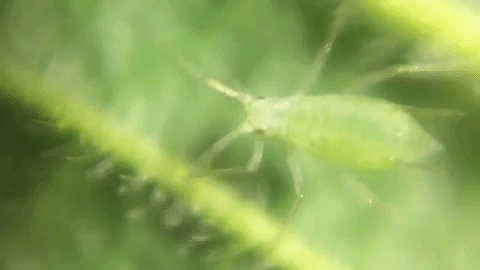Bumblebees might be the cutest ones
Even their genus, Bombus, is far too adorable.
I love bumblebees. Real talk, who doesn't? Once I'd really gotten into the macro iPhone pics, a friend started collecting various dead insects she found in her conservatory for me. I actually, for a short time, had a jam jar to house the menagerie of expired creatures that I'd not yet photographed.
And yes, I absolutely hid said jam jar in a cupboard like some kind of Bates, because it’s just not chill to have that around the place when you’ve got visitors. You can’t explain your way out of coming off not-Silent-Hill when there are dead pieces of invertebrate all over the table. Note: A mini tripod poised next to a crusty bee does nothing to make this seem less weird.
Anyway. My RIP-amigos are standard Buff-tailed bumblebees—the two yellow stripes and a white rear end are the giveaway. I made a promise to myself that whilst I was getting into this creeper photography I would learn a thing or two. So, here are the facts.
Tidy wings is a newbie
I’ve read in a few places that if you find a dead bee with tatty wings, it’s likely to have died of old age; messy wings indicate a long life and lots of mileage. If the wings are tidy, the cause of death is likely to be something else. You can see slightly tatty wings on one of the bees pictured, whereas the wings the other aren't. I’d say bee number 1 died naturally and bee number 2 likely died from hunger—bee friend number 2 was from my friend's conservatory, so I imagine it got trapped.
Male bees and wasps can’t sting
Also, bumblebees can sting you a number of times. This is because their sting isn't barbed, unlike the honeybee. It’s still highly unlikely that a bumblebee would sting you though, since they are far more interested in doing what they’re busy doing.
Let's back up to honeybees real quick
It’s about the time-old question of whether bees die when they sting and—when it comes to honeybees—it’s not as simple as “yes, because their guts get ripped out”. Yes—honeybees have barbed stingers, but it's only when honeybees sting creatures with thick skin that this gut-wrenching effect happens.
Bumblebees are excellent pollinators
But not so at making bags of honey. They do make it, but just not really enough of it to harvest. Why? Reasons. They have longer seasons and certain species have long tongues, but reason number one is their fuzz factor. They physically collect more pollen, therefore pollination chances increase.
That fuzz is electric
All hairy bees carry an electrostatic charge in their fluff that helps pollen stick. Yeah. Let that awesome science sink in for a second.
Like many insects, bumblebees have five eyes.
There are the two compound eyes that are easy to see—shiny and covered in hexagonal units called ommatidia—and there are three at the top of their heads called ocelli. The ommatidia have three types of visual cells, detecting blue, green and ultra-violet. The ocelli detect changes in light sensitivity—to detect predators.
Aerodynamically impossible flight? Not so much.
Because, they fly. And boy, do they: at a wing rate of 220 beats/second. Their bodies are so round and rotund because they’re a mass of muscle, giving them the power to fly. And their wing rotations reveal the secret—220 bps isn’t quite enough to give lift; at the end of each downstroke they twist the wings over, meaning air is pulled downward to propel them up with double the lift—even on the upstroke. Amazing.
They can rev themselves up
8. This flight doesn't just happen off the bat, though—they need to be warm enough. And they’ve an amazing technique to do so, which gives them an early advantage over other hungry insects as well. They can put their wings out of gear, allowing them to rev up their muscles without moving their wings. This gets their bodies fully heated for flight, rather than waiting for the sun to do the work. Bad ass. Particularly on cold mornings, as this means they’re up and out before everything else has warmed up.
Oh shit, they play football!
Well, kinda! They can learn stuff if you give them a sugar reward, which is mind blowing. Even more mind blowing… they can pass on the skills they learn to other bees. Even double a million plus mind blowing? They improved upon the skill, because they’re amazing. Our lesson? We’ve got to stop thinking of ourselves as the only meat with smarts. They can learn footie balls and they can teach other floofs how to kick it and they can kick it better than what we learned them.















